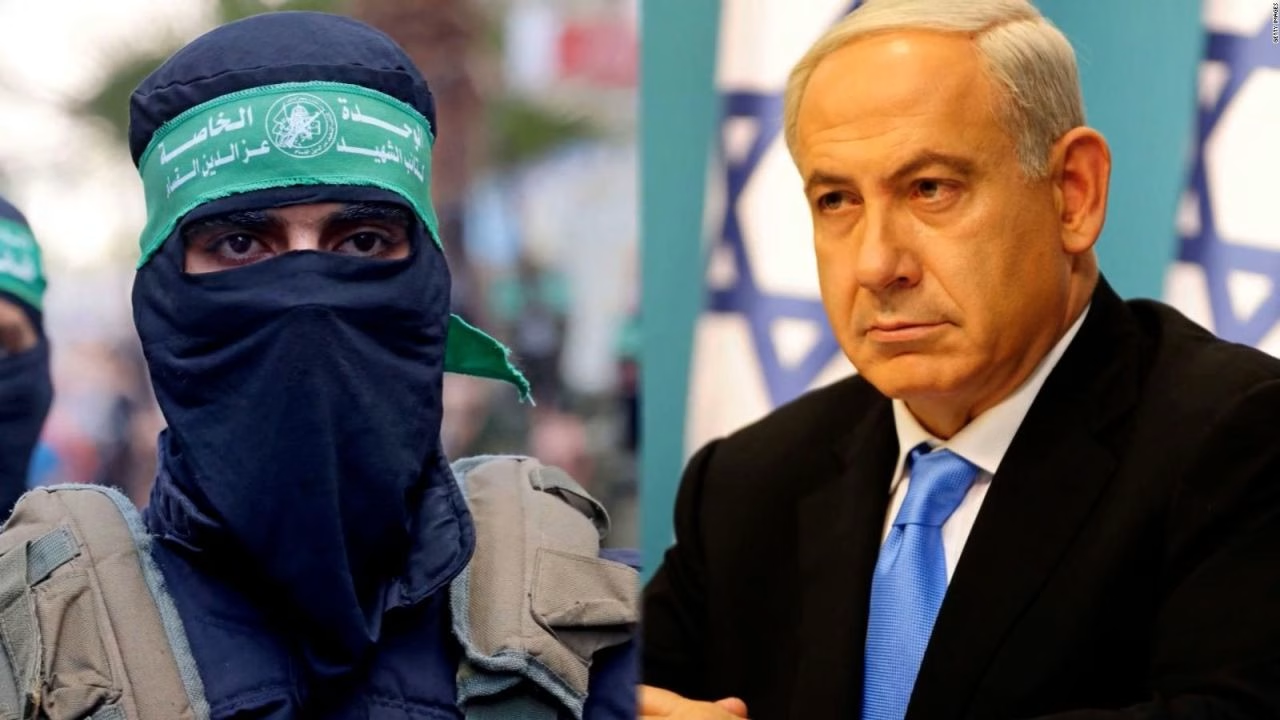By Ben Emos & Don Terry | Monday, October 20, 2025 | 6 min read
The fragile hope once carried by the Oslo Peace Accords is slipping away once more. In Gaza, fighting between Hamas-linked groups and rival factions has intensified, even as diplomats work frantically to uphold a U.S.-brokered prisoner–hostage swap and a fragile ceasefire between Israel, under Netanyahu, and Hamas. The talks in Sharm el-Sheikh on October 13, 2025, briefly raised cautious optimism, but on the ground, that hope is nearly gone. What began in early October as scattered skirmishes has now erupted into a wave of violence that feels hauntingly familiar, reopening the deep rifts that helped derail Oslo decades ago.
As the days passed, the fighting escalated sharply after October 10, trapping communities between the tightening grip of armed groups and the unrelenting force of the Israeli military. On October 13, chilling footage began to circulate online. Released by the Sahm Unit—a force reportedly linked to Gaza’s Interior Ministry—it showed the public execution of eight blindfolded and handcuffed men. Local sources said the men were members of a family militia in Gaza City, accused of cooperating with outside actors. The images were stark and deeply unsettling, a grim reminder that Gaza’s internal fault lines run just as deep as its conflict with Israel.
In the midst of this turmoil, ordinary people are left navigating a landscape where loyalty can mean survival, and neutrality is often not an option. The violence isn’t just between opposing sides; it is also within communities, tearing at the social fabric that still clings to what remains of everyday life. The renewed hostilities are not just reviving old wounds—they are widening them, making the prospect of reviving any meaningful peace process feel further away than ever.
Only a day later, the bloodshed spread beyond internal disputes. On 14 October, Israeli soldiers reportedly opened fire on Palestinians attempting to return to their damaged homes in eastern Gaza City. Three people were killed on the spot. According to the Office of the High Commissioner for Human Rights (OHCHR), these were not isolated incidents. Since 10 October, at least 15 Palestinians have been shot dead in similar circumstances. Many of the victims were civilians—ordinary people trying to return to what little remained of their neighborhoods.
“The situation in Gaza remains precarious and uncertain,” said Ajith Sunghay, head of OHCHR in the Occupied Palestinian Territory. “It is imperative to ensure that the ceasefire holds and progresses to recovery and the full realisation of Palestinians’ right to self-determination.”
For many in the region, this flare-up feels like history repeating itself. Nearly three decades have passed since Yitzhak Rabin and Yasser Arafat shook hands on the White House lawn in 1993. The Oslo Peace Accords were supposed to chart a new course for Israelis and Palestinians—a framework that promised mutual recognition, an eventual two-state solution, and an end to decades of bloodshed. But even as the ink dried, powerful currents were already pulling Oslo apart.
On the Israeli side, Benjamin Netanyahu, then an opposition leader, fiercely opposed Oslo. He argued that the agreement endangered Israel’s security, casting doubt on the idea of a Palestinian partner for peace. On the Palestinian side, Hamas rejected the accord outright, portraying it as a betrayal of the national struggle. Both Netanyahu’s political resistance and Hamas’s armed rejectionism undermined Oslo’s foundations from the start. The deal, built on fragile trust, was battered by extremists on both sides who saw compromise as a threat.
That fragile promise was shattered further in November 1995 when Prime Minister Yitzhak Rabin was assassinated by a right-wing Israeli extremist who opposed Oslo. Rabin’s death changed the course of the peace process. He had been a central figure—both a warrior and a statesman—who believed that peace, however imperfect, was worth pursuing. After his assassination, the peace camp in Israel weakened, and hardline politics gained new momentum. Netanyahu’s rise to power soon after brought a sharp shift away from Oslo’s spirit. Negotiations dragged on, violence surged, and the dream of two states drifted further out of reach.
Today, the renewed clashes between Hamas factions and the Israeli military feel less like a new chapter and more like a return to an old and bitter script. Both sides are entrenched, with little political will for compromise. Hamas, weakened but unbowed, remains a powerful force in Gaza, relying on a mix of ideology, coercion, and the chaos of war to maintain its grip. Netanyahu, once again at the helm of Israel, faces growing domestic and international pressure but shows little sign of pursuing a serious peace track.
For ordinary Palestinians trapped in Gaza, these political calculations mean very little compared to daily survival. Many are trying to return to their homes after bombardments, only to find rubble where walls once stood. Families dig through debris searching for documents, clothing, or the bodies of loved ones. Some have nowhere left to return to. The border crossings are tightly controlled, and humanitarian aid is struggling to keep up with the scale of need.
Human rights groups warn that if the ceasefire collapses entirely, Gaza could plunge into another full-scale war, deepening a humanitarian catastrophe that has already lasted for years. “There is no military solution to this conflict,” said a spokesperson for a regional NGO assisting displaced families. “But it’s the civilians who keep paying the price.”
The shadow of Oslo looms over all of this. For a brief moment in the 1990s, the idea of coexistence seemed possible, if fragile. But decades of mistrust, violence, and political opportunism turned that possibility into a cautionary tale. Hamas and Netanyahu, each in their own way, helped erode the deal then—and their return to center stage now underscores just how far from peace the region has drifted.
As gunfire echoes through Gaza and grief settles into its familiar place, the peace that was once promised seems like a distant memory. Rabin’s assassination marked the death of the Oslo dream, and today, both sides seem trapped in its long shadow. Unless something changes, this cycle of violence may only deepen, leaving future generations with even less hope than the one before them.



